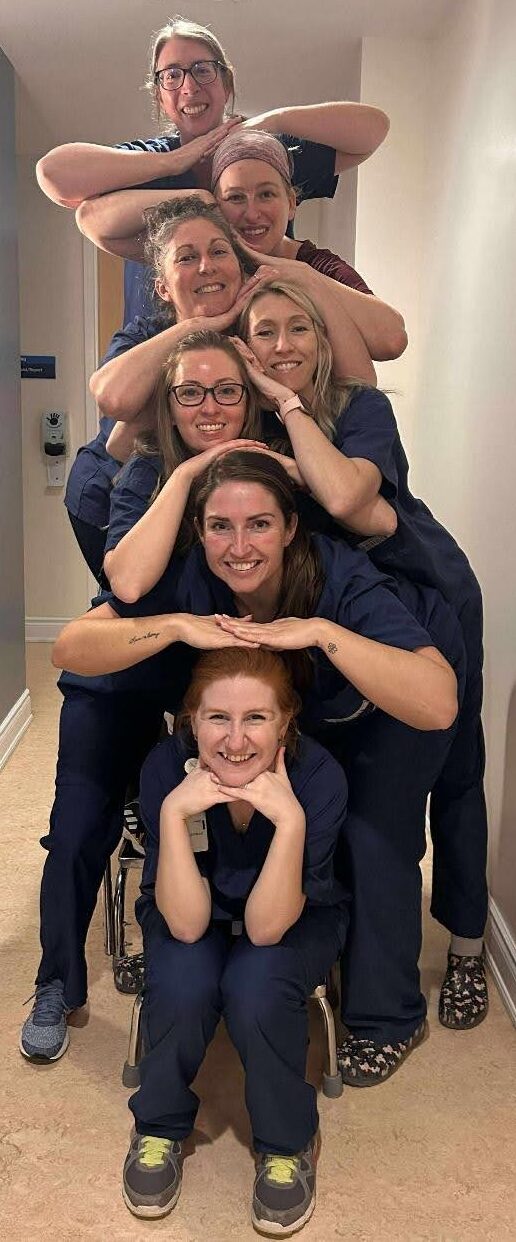Written by: Kelly Reynolds, MRT, CBI, BSc
Working in the field of mammography is not for everyone; it takes a remarkable person to master the demands of the profession and constantly provide exceptional care. From the patient perspective the jokes are often plenty, but the understanding is scarce. For the unfamiliar, breast imaging can seem like a strange concept. After all, what kind of valid medical test involves a technologist taking a picture of someone’s breasts, flattened between two plates? It sounds absurd. We’ve all heard the jokes, from grapefruits to pancakes. But to those of us who do this work, we understand: it’s a moment. It’s trust. It’s dedication to another person and their well being.
Since the first dedicated mammography unit was developed in 1965, mammography has saved countless lives. Advancements in technology have led to high levels of sensitivity enabling the detection of subtle changes in breast tissue, critical for the early diagnosis of breast cancer. Words and phrases such as attenuation, contrast, cathode and filament often float in the background, highlighting the complexity involved in producing diagnostic images. But technology is only half the story. It is the compassion, expertise, and teamwork of dedicated professionals that elevates mammography beyond digital detectors and high-resolution monitors. A strong connection within the team, rooted in communication, trust and shared goals, is equally vital to delivering high-quality imaging. Technology cannot deliver compassionate care or master the art of precise positioning. That part belongs to the technologist – and mammography technologists are truly special individuals.

The first commercially available mammographic x-ray unit, the CGR Senographe, was produced in 1967. (Haus, A. G.)
Failures in positioning are associated with cancer developing between screening exams (Taplin et al., 2002). Clinical image quality reviews have shown that cancer detection is highest among patients with proper breast positioning, but when images failed this measure, sensitivity fell almost 20% (Taplin et al., 2002). Thus, technologists take the starring role in this story.

The technologist, and the teams they form, play an invaluable role in developing quality standards within the mammography department. Technologists contort, twist and move in all directions trying to provide the highest quality images possible. It is well documented that the repetitive physical strain of mammography can lead to musculoskeletal injuries (Costa, et al. 2014). Seminars and training programs are dedicated to addressing this physical toll, but the emotional toll of working in this field is often forgotten. Behind the scenes, technologists often carry the emotional weight of patient interactions, abnormal findings, and the relentless demand of clinical precision.
We’re not just positioning a breast, we’re acknowledging worry, fear, hope, and sometimes grief. In this high-pressure environment, team support isn’t just beneficial, it’s the glue that holds our team together, vital to preserve the people behind the profession.
There is a certain magic in team culture. When technologists feel emotionally supported, they are better equipped to focus, remain compassionate, and maintain high standards in breast imaging. A cohesive and empathetic team creates a positive working environment that directly contributes to quality outcomes (Rosen, et al. 2018). Shared understanding and mutual respect reduces burnout and fosters a culture where asking for help isn’t seen as weakness but rather as a strength. That’s why the people beside us matter so much. Because some days carry a heavier emotional workload, and on those days team support is crucial.
Emotional well-being is not separate from clinical excellence. It fuels it! Technologists who feel valued and supported are more likely to engage in ongoing learning, remain vigilant during routine tasks, and contribute to meaningful conversations around quality improvement efforts (Diver, et al. 2021). Mammography technologists often possess the empathy, communication skills, and emotional intelligence that naturally lend themselves to forming strong, supportive teams. These interpersonal strengths help foster a collaborative environment that promotes not only professional resilience in the face of clinical pressure, but also personal support when facing challenges outside of work.
The strength of the team drives the strength of care. Cohesive teamwork directly enhances the quality of patient care. Studies indicate that patients benefit from the heightened attentiveness and unified care that only a strong, emotionally healthy team can provide (Rosen, et al. 2018). When emotional well-being is prioritized among technologists, they are able to focus on quality, consistency and care. It is essential to foster an environment not only for patients, but for each other as well. In mammography, where every image has life-altering potential, the human connection between team members becomes a silent driver of quality - one that is as critical as the technology used to capture the image.
Take care of each other!

References:
Haus, A. G. (2002). Historical technical developments in mammography. Technology in Cancer Research & Treatment, 1(2), 119–126. https://doi.org/10.1177/153303460200100204
Taplin, S. H., Rutter, C. M., Finder, C., Mandelson, M. T., Houn, F., & White, E. (2002). Screening mammography: Clinical image quality and the risk of interval breast cancer. American Journal of Roentgenology, 178 – 803. http://doi/org/10.2212/ajr.178.4.1
Costa, S., Oliveira, E., Reis, C., Viegas, S., Serranheira, F. (2014). Mammography equipment design: Impact on radiographers’ practice. Insights Imaging. 5(6): 723-730. http://pubmed.ncbi.nlm.nih.gov/25272950/
Rosen, MA., DiazGranado,s D., Dietz, AS., Benishek, LE., Thompson, D., Pronovost, PJ., Weaver, SJ., Teamwork in healthcare: Key discoveries enabling safer, high-quality care. Am Psychol. 2018 May-Jul; 73(4):433-450. https://pubmed.ncbi.nlm.nih.gov/29792459/
Driver, S., Bucherii, N., & Ohri, C. (2021). The value of healthcare worker support strategies to enhance well being and optimise patient care. Future Heathcare Journal, 8(1), e60-e66. http://doi.org/10.7861/fhj.2020-0176



